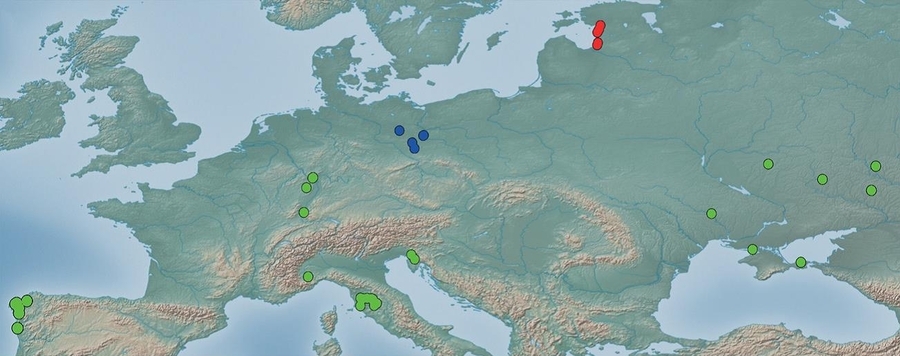
Range expansion of the venomous yellow sac spider
Although poleward range expansions are commonly attributed to global change, a complex interaction of ecological and evolutionary factors might contribute to expansion success. Here, we study the expansion of the yellow sac spider Cheiracanthium punctorium, a medically important species in Central Europe. Using microsatellite markers and DNA sequences, morphological and climate niche analyses, we identify factors associated with the spider’s expansion success. Our results indicate that the species’ initial expansion has been triggered by environmental change and preadaptation in the source populations. However, despite extensive gene flow, expanding populations maintain genetic and morphological differentiation from native ones, which is correlated with climatic niche differences. Moreover, expanding spiders might have temporarily escaped an eggsac parasite that causes high mortality in the native range. Hence, our results paint a complex picture of diverse factors associated with expansion success. We speculate that expanding populations might be capable of adapting to novel ecological conditions in northern Europe. This could allow a substantial range expansion, much farther than by environmental change alone. Our distribution model predicts that the spider will soon massively spread over most of northern Europe, bringing along considerable health concerns.






